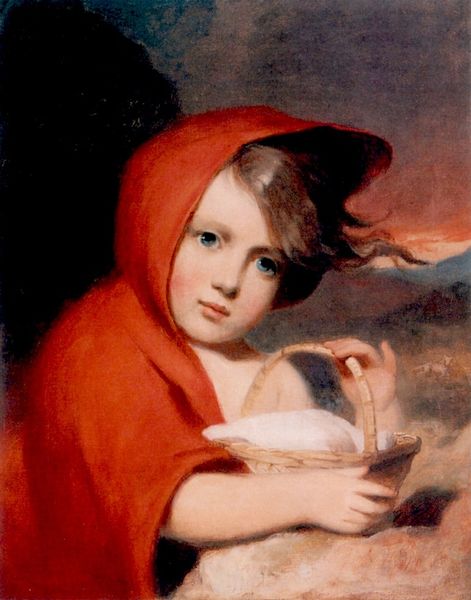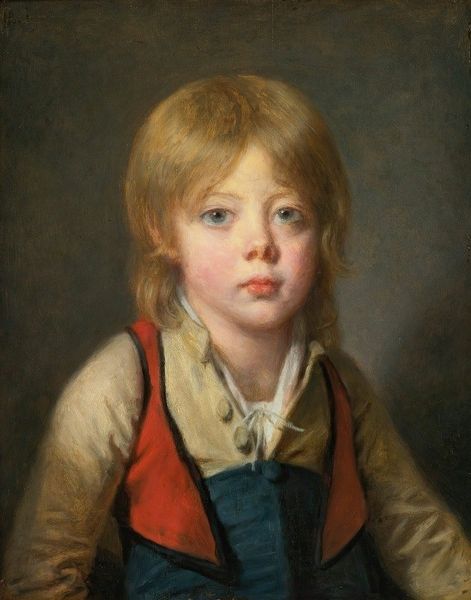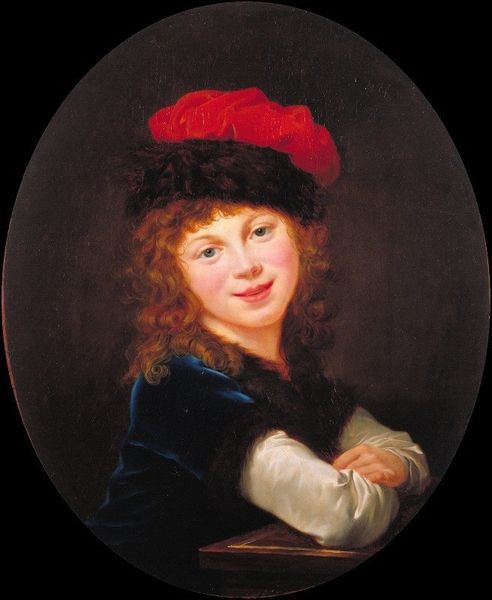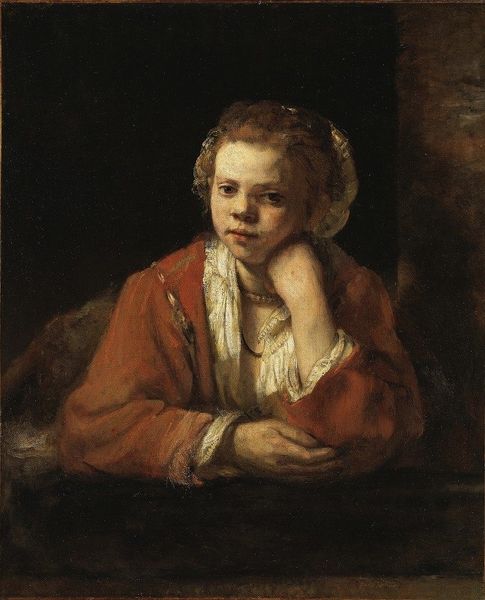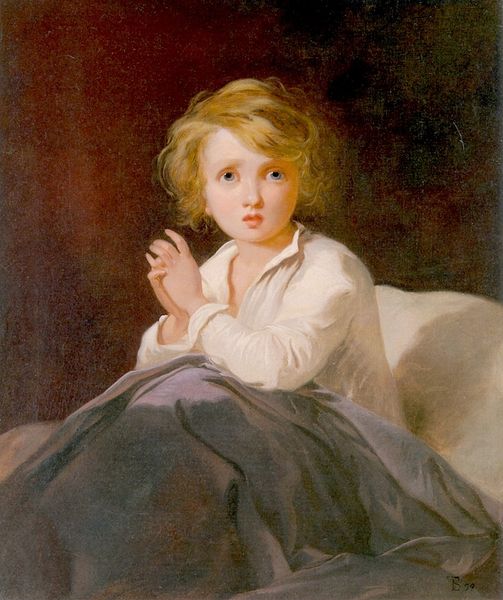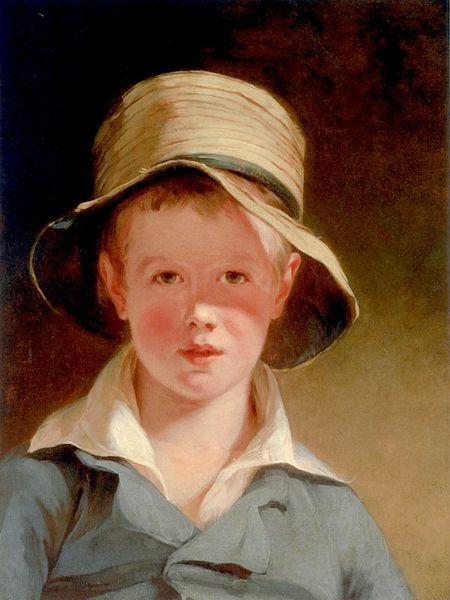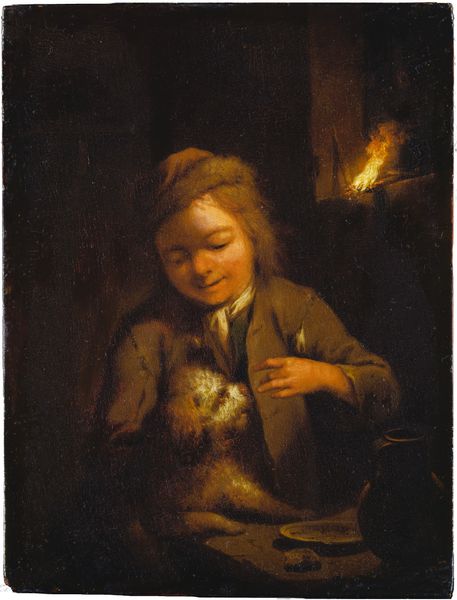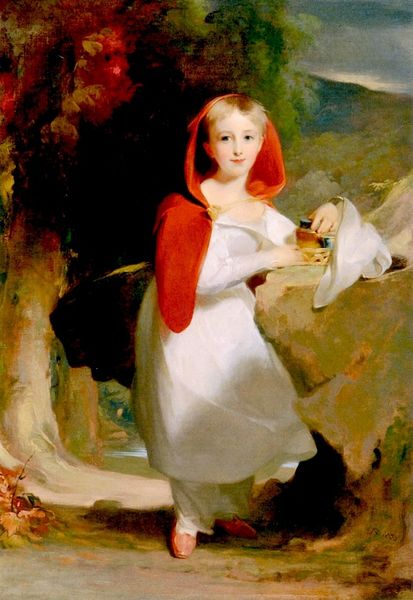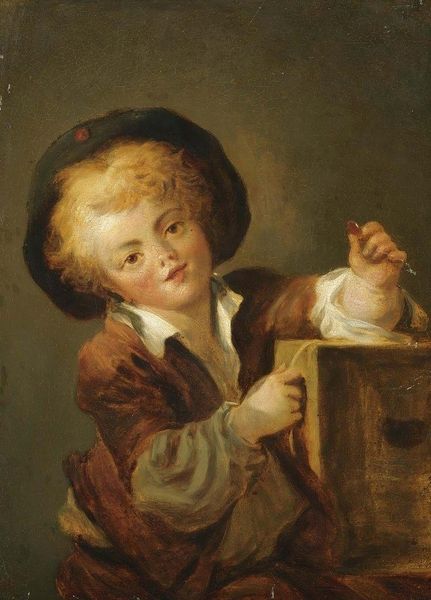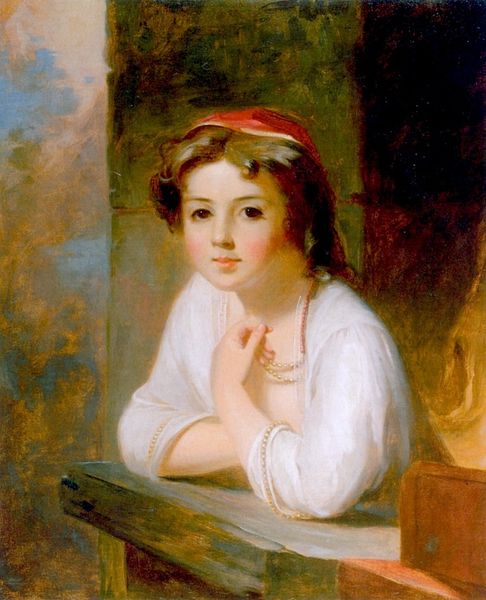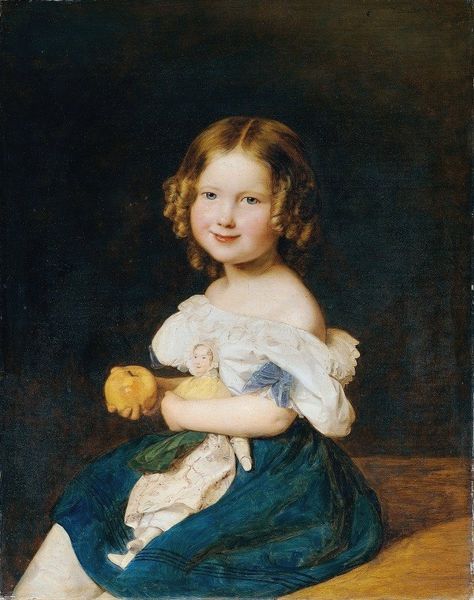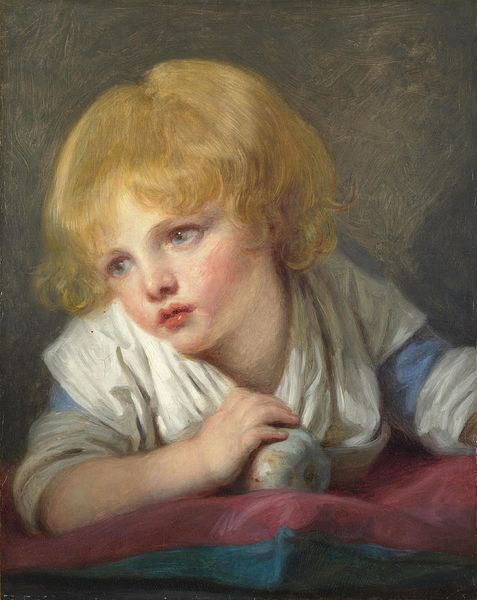
Copyright: Public domain
Editor: This is Édouard Manet's "The Boy with Cherries," created in 1859 using oil paint, showcasing an interesting impasto technique. There's a certain somber mood despite the vibrant red cherries. What's your interpretation? Curator: The process here is quite telling. Manet, early in his career, is wrestling with realism but his means of production already hint at his later concerns. Observe the dark background and compare it with the rough handling of the boy's clothes, seemingly dashed off to emphasize material presence over accurate description. What do you make of the cherries themselves? Editor: They definitely grab your attention. The stark red pops against the darker tones and makes me wonder about their symbolic importance or perhaps Manet's view of consumer culture emerging. Curator: Exactly! Consider the socio-economic implications. Cherries, a seasonal luxury, presented here are a marker of trade, class and consumption. This is more than just a portrait; it is a meditation on material conditions, painted with an awareness of the labour and exchange that produces even such simple pleasures. How does that realization shape your initial impression of the work? Editor: It definitely makes me see the painting beyond its surface. I'm struck by how Manet uses the everyday object, cherries, to highlight the intricate social and economic forces at play in mid-19th century France. It’s pretty amazing when you look at it from this angle! Curator: Precisely. Looking closely at art practices allows us a rich access to socio-historical processes. I am glad you now see it too.
Comments
No comments
Be the first to comment and join the conversation on the ultimate creative platform.
